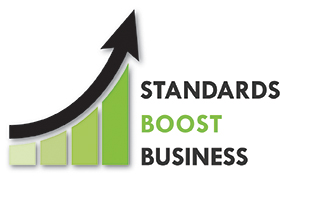 |
|
|
COPYRIGHT
All rights reserved.
All content
on the Standards Boost Business (SBB) website (www.standardsboostbusiness.org)
is copyrighted by the American National Standards Institute (ANSI), and the
copyright owners of individual reference documents and case studies.
ANSI’s address is 25 West 43rd Street, New York, NY 10036.
Disclaimer
The
information contained on this site is provided WITHOUT WARRANTY OF ANY KIND,
INCLUDING THE IMPLIED WARRANTIES OF MERCHANTABILITY, FITNESS FOR A PARTICULAR
PURPOSE, TITLE AND NON-INFRINGEMENT. Information contained on this site may
originate with third-party content suppliers and ANSI expressly disclaims any
responsibility or liability for its accuracy, interpretation or use.
Advertisements appearing on this site do not constitute an endorsement by ANSI,
or any of the content suppliers of the product or service advertised.
Limitation of Liability
In no event
will ANSI be liable for any direct, special, incidental or consequential
damages, including loss of revenue, profits, data, use or other economic
advantage, arising out of the use or interpretation of the information
contained herein or in any linked sites even if ANSI has been advised of the
possibility of such damages. In no event will ANSI be responsible for claims in
favor of any person on account of personal injury or property damage caused by
such person’s use of the interoperability specifications, standards or related
materials.
Beyond the bottom line: standards impact quality, lead-time, factory flexibility, and supply chain management. |
|
Standardization and conformity assessment activities lead to lower costs by reducing redundancy, minimizing errors, and reducing time to market. |
|
Demonstrating compliance to standards helps your products, services, and personnel to cross borders. Standards also make cross-border interoperability possible, ensuring that products manufactured in one country can be sold and used in another. |
|
Businesses not only reduce the economic risk of their research and development activities by participating in standardization, they can also lower their overall R&D costs by relying on previously standardized technologies and terminologies. |